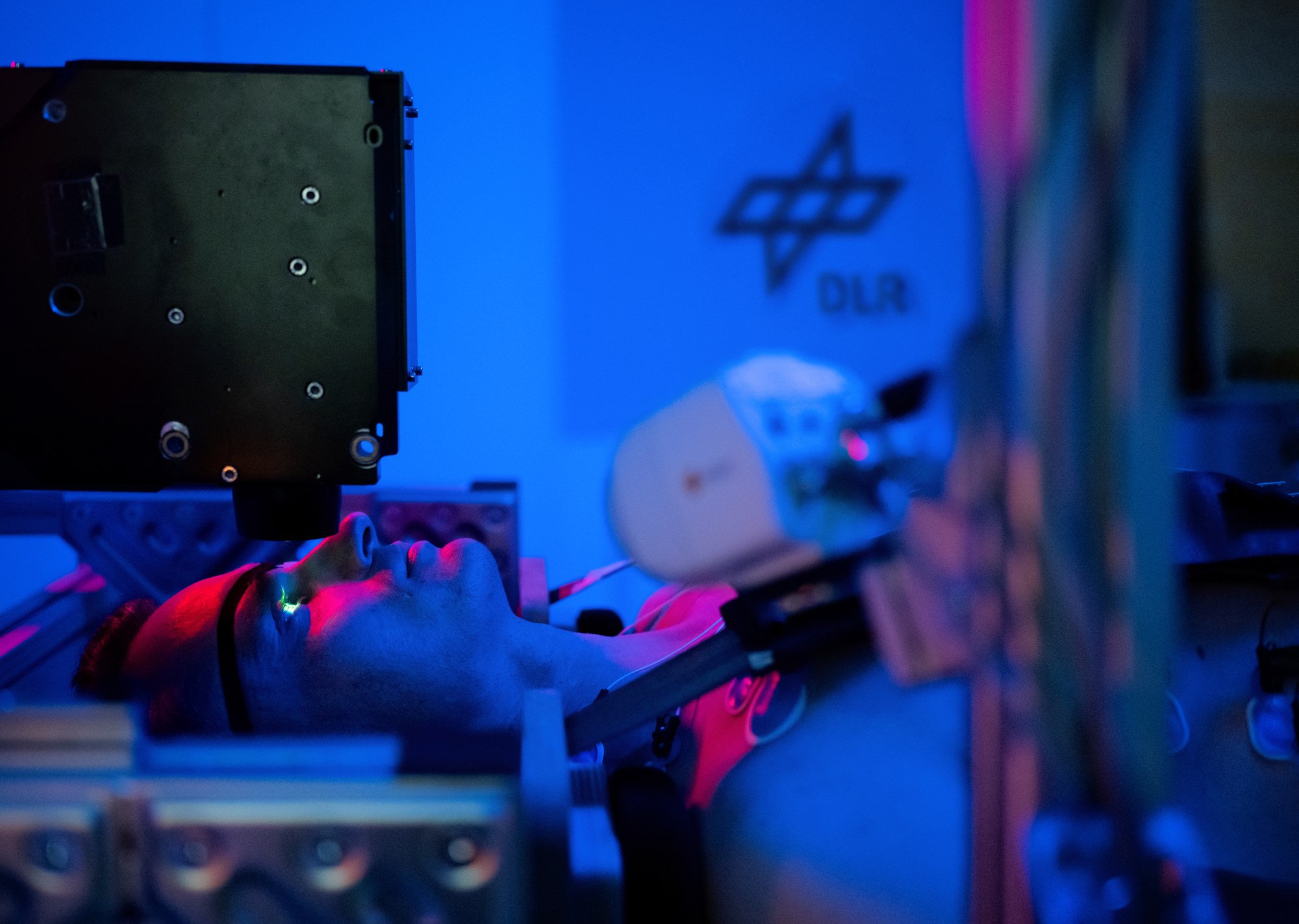Look me in the eyes
Look me in the eyes
A special type of eye examination is shown in this Picture – in the RIDGE study (Retinal circulation during gravitation changes in a human centrifuge), researchers from the DLR Institute of Aerospace Medicine are investigating how and whether intraocular pressure and blood flow in the retina change under altered gravitational conditions. In microgravity, fluids from the lower half of the Body move towards the head and chest. This can cause visual disturbances and neurological impairments, especially during long-term space missions. In space medicine, these symptoms are referred to as Spaceflight-Associated Neuro-Ocular Syndrome (SANS). This is a Major risk for both male and female astronauts.
The RIDGE study is being conducted in collaboration with the Department of Cardiology at the University Hospital of Düsseldorf and is funded by the German Space Agency at DLR. In the :envihab research facility at the DLR site in Cologne, test subjects are rotated while lying on the short-arm human centrifuge. This induces a targeted fluid shift in the direction of the head, but also in the direction of the legs. Meanwhile, Researchers measure the changes in intraocular pressure and the body's regulatory mechanisms under different gravity conditions. The pupil is dilated with eye drops so that it does not contract when the bright green light is used during the eye examination to measure arterial and venous vessels on the retina. The results of this study are important not only for human spaceflight, but also for clinical research on Earth, offering valuable insights for the treatment of diseases related to fluid regulation in the human body.
Credit: © DLR. All rights reserved

